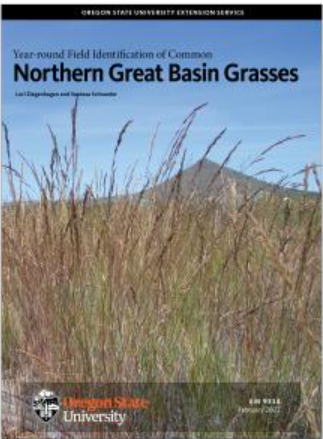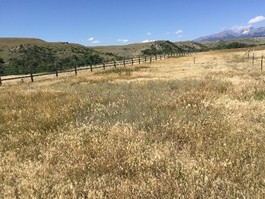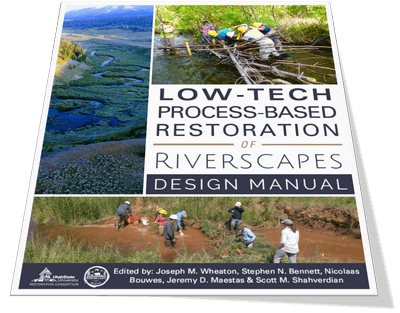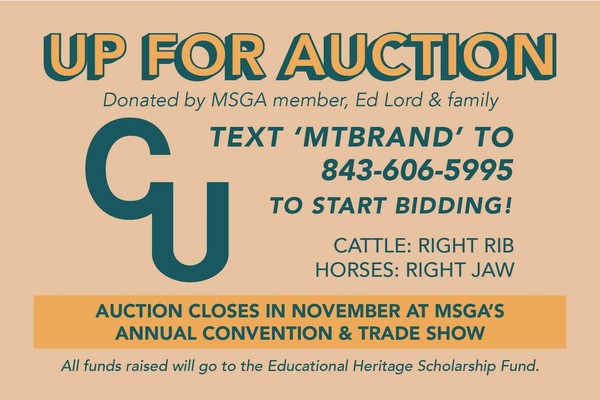Ask an Expert | The Green Glacier: What is Conifer Encroachment and Why is it Bad?
As a general rule, humans love trees. It’s not surprising; there’s a lot about trees to like. Trees help clean our air, pull carbon dioxide from the atmosphere, and help provide clean water. Studies show that people prefer living and shopping along tree-lined streets. No doubt, a big part of our collective appreciation of trees is their beauty. It’s hard to walk through a shady forest and not be captivated by the simple beauty it provides.
But trees don’t belong everywhere. Across the globe, vast swaths of the landscape are naturally treeless, and they make up 40% of all terrestrial ecosystems. They’re not barren landscapes, devoid of life. Rather, they’re some of our most productive and important ecosystems. These areas – known as grasslands, shrublands, prairies, steppes, pampas, or more generally, rangelands – are dominated by native grasses, wildflowers, and shrubs. They play a critical role in providing society with food and fiber, clean water supplies, and support a remarkable diversity of unique wildlife that don’t live in forests.
Read more of Jeremy Maestros interview, here!
Encroaching juniper trees cause a cascade of issues to healthy sagebrush habitat and the wildlife that depend on it. Photo: Jeremy Roberts, Conservation Media

Congratulations to Dave Kelsey for Receiving MSU's Outstanding Agricultural Leader Award!
BOZEMAN — Montana State University’s College of Agriculture and Montana Agricultural Experiment Station will host the annual Celebrate Agriculture weekend Nov. 12-13 on the MSU campus. Celebrate Agriculture honors MSU alumni and students and the legacy of Montana’s agricultural communities.
Celebrate Ag Weekend will include an agricultural economics conference, a pregame event at Saturday’s Bobcat football game against the Idaho Vandals and the presentation of the Outstanding Agriculture Leader Award to Dave Kelsey of Molt.
“We are so glad to be bringing back Celebrate Ag Weekend this year,” said Sreekala Bajwa, MSU’s Vice President of Agriculture and Dean of the College of Agriculture, noting that the 2020 event was canceled due to the pandemic. “It will be a joy to reconnect with our partners, alumni, donors and friends after the challenges of the past year and a half.”
The weekend will kick off on Friday, Nov. 12, with the annual Agricultural Economics Outlook Conference hosted by the Department of Agricultural Economics and Economics and MSU Extension. The conference will run from 8:30 a.m. to 3 p.m. at Bozeman’s Best Western GranTree Inn. Presentations around the theme of “Continued Uncertainty” will include a 2021 agricultural year in review, trends in agricultural and forest land conservation, drought management strategies and the future of farm policy, among others.
Read more, here!
|

History of the Rangeland Resources Program
Did you know in 1977 the Montana state legislature passed a bill titled the "Montana Rangeland Resources Act" (MCA 76-14-101) The resource act made the Montana Rangeland Resources Program part of statute with the purpose to establish a program of rangeland management that emphasizes the importance of Montana's rangeland, cooperation and coordination of range management activities between private and public parties, and recognition of those who are doing exceptional work in range management (MCA 76-14-102).
Currently, the Rangeland Resources Program supports many great programs that epitomize the purpose of the Montana Rangeland Resources Act, of which include, the Montana Rangeland Resources Committee, the Rangeland Improvement Loan Program, the Working Lands Internship Program, and the Leopold Conservation Award.
The Rangeland Resource Committee is composed of six governor-appointed ranchers located across the state and provide guidance to the Rangeland Resources Program (MCA 76-14-106). The duties of the committee are to provide council to the State Rangeland Coordinator, review and recommend annual and long-range work programs, and suggest work priorities. The current members of the committee include:
- Diane Ahlgren, Chair, Winnett
- John Hollenback, Vice Chair, Gold Creek
- Sigurd Jensen, Elmo
- Jim Anderson, Chinook
- Leah Lewis, Boulder
- Ron Devlin, Terry
The Rangeland Improvement Loan Program was created in 1979 to make loans available for parties interested in rangeland development and improvement, including but not limited to stock water development, cross fencing, establishment of grazing systems, reseeding, mechanical renovation, sagebrush management, and weed control (MCA 76-14-111). Interested parties must first apply to local conservation district, where the conservation plan will be reviewed. The application is then be reviewed by the Department of Natural Resources and Conservation (DNRC) before being forwarded to the Rangeland Resources Committee. The Director of DNRC has final approval authority.
The Montana Rangeland Resources Committee and the Rangeland Resources Program offers the Working Lands Internship to students seeking to immerse themselves in rangeland management. The internship engages beginning agriculturalists, natural resource and range specialists, biologists, soils majors or any student looking into natural resources to learn real-world and hands-on experience implementing rangeland management tools. Each summer, interns spend two weeks at six different ranch operations across the state to learn about rangeland monitoring, plant and weed identification, rotational grazing, ranch economics, erosion control, habitat conservation and much more.
In 2019, the Montana Rangeland Resources Program partnered with the Sand County Foundation to award Montanan ranchers who exemplify rangeland management and conservation. One ranch each year is awarded the Leopold Conservation Award, which stands for conservation ethic, resilience, leadership, communication, innovation, and adaptability. The Leopold Conservation Award gives the program a way to recognize ranch families in our community that embody rangeland management. During the annual Montana Range Tour, an awards banquet is thrown to honor the Leopold Conservation Award winner.
Learn more about the Rangeland Resources Program, here!
|
 |
Inspiration to read - Stimulating discussion - Books that matter
The Ranch Stewards Book Club is free and open to anyone who wants to join. We’re here to read, learn and grow together! And, a BONUS — the first 20 people who sign up for the Book Club by Thursday, Oct. 7 will get a FREE copy of the Winter 2021/2022 book, Nourishment by Fred Provenza, compliments of RSA.
Here’s our Nourishment reading plan:
-
7 p.m., Tuesday, Nov. 16: Discuss Part I (pages 1-52)
-
7 p.m., Tuesday, Dec. 14: Discuss Part II (pages 53-120)
-
7 p.m., Tuesday, Jan. 18: Discuss Part III (pages 121-190)
-
7 p.m., Tuesday, Feb. 15: Discuss Part IV & V (pages 191 - end).
Want to join in? These virtual Book Club conversations are casual, open, and for the curious-minded reader. Register soon and let’s get to reading!

OSU Releases New Grass Field Guide
Oregon State University Extension Services has published a peer- reviewed guide titled: Year-round Field Identification of Common Northern Great Basin Grasses. This photo-guide provides detailed identification information for common grass species found throughout the northern Great Basin and is a great idea for anyone who does year round plant work in the sagebrush ecosystem.
The free pdf can be downloaded here!
|
MSU Extension Weed Post

Milfoil Weevil (Euhrychiopsis lecontei)
By Hannah Hoff, MSU Dept. of Plant Sciences and Plant Pathology, Email Hannah Hoff
The milfoil weevil (Euhrychiopsis lecontei) is a small aquatic beetle native to North America that is a specialist herbivore of the native northern watermilfoil (Myriophyllum sibiricum) and Eurasian watermilfoil (M. spicatum). It spends much of its life submerged, mining into watermilfoil stems to feed and develop. Specialist herbivores are rare among aquatic insects, and native insects are appealing for biological control due to reduced risks to non-target species. Therefore, the milfoil weevilhas been an appealing agent for Eurasian and hybrid (M. spicatum × sibiricum) watermilfoil.
Read more about Milfoil Weevil, here!
|

Testing Indaziflam for Restoring Cheatgrass (Bromus tectorum) Infested Montana Rangelands
By Ben Hauptman, Granite County Extension, Email Ben Hauptman
In summer 2020 the active ingredient indaziflam (RejuvraTM) was approved by the Environmental Protection Agency for use on rangelands, CRP, and natural areas. Indaziflam’s mode of action inhibits cellulose biosynthesis in seedlings, making it an effective pre-emergent herbicide for annuals such as cheatgrass (Bromus tectorum), a non-native winter annual grass. Cheatgrass is the most widespread invasive plant in the western U.S., and it is problematic for many range managers throughout Montana. Ranchers and other land managers in Montana are interested in indaziflam as another tool for controlling cheatgrass. This project focused on effectiveness of control of cheatgrass, measuring the perennial grass response, and return on investment of this herbicide for ranchers.
Read more about testing indaziflam, here!
|
 |
|
Low-Tech Process-Based Restoration of River Scapes Design Manual and Workshops Released
Utah State University released a design manual with the purpose to provide practitioners with guidelines for implementing a subset of low-tech tools like beaver dam analogues and post-assisted log structures.
Read more, here!
Low-Tech workshops and courses can be found, here!
|
Brand auction to benefit MSF scholarship fund

Master Hunter Program

Chairman Leahy Releases Remaining Nine Senate Appropriations Bills
WASHINGTON (Monday, Oct. 18, 2021) – Senate Appropriations Committee Chairman Patrick Leahy (D-Vt.) Monday released the remaining nine Fiscal Year 2022 Appropriations Bills. Monday’s announcement follows months of Leahy calling for bipartisan, bicameral negotiations with the White House on topline spending and the successful, bipartisan passage of the Energy & Water, Military Construction and Veteran’s Affairs, and Agriculture and Rural Development appropriations bills out of the Committee back in August.
Chairman Leahy said the bills comply with the topline spending allocation contained in the fiscal year 2022 Budget Resolution. Combined with the three bills reported from the Appropriations Committee in August, the bills provide a 13% increase for non-defense discretionary programs and a 5% increase for defense programs, he added.
Notably, the FY22 Interior, Environment, and Related Agencies appropriations
Read the Explanatory Statement for the Department of the Interior, Environment, and Related Agencies Appropriations Bill, 2022, here!
Western Governors' Association Meets to Discuss Future Regional Collaboration

Chair Governor Brad Little hosted a Western Governors Association Working Lands, Working Communities initiative workshop earlier this month . This two fold workshop was a collaborative effort to share success stories and plan for the future. To begin with, the Governors examined relationships between different land management agencies and entities. The second portion of the workshop was a discussion examining emerging issues, developing bipartisan strategies to mitigate cross-boundary land management, mitigate wildfire risk and continue to improve ecosystems. On the opening day of the workshop, Gov. Jared Polis highlighted the importance of regional collaboration to battle the destructive wildfires and other landscape challenges that have become "less of an anomaly, and more the norm."
Watch the recordings here.
|

USDA Invests $21 Million in Effort to Help Producers Build Drought Resilience
|
|
USDA’s Natural Resources Conservation Service (NRCS) is investing $21 million as part of its collaboration with the Department of Interior’s (DOI) WaterSMART Initiative to help farmers and ranchers conserve water and build drought resilience in their communities. NRCS works with Reclamation to coordinate investments in the same community for accelerating water conservation and drought resilience and making a bigger impact where it is most needed.
Learn More
|
Future Fisheries Improvement Program grant deadline is Nov. 15
Montana Fish, Wildlife & Parks reminds landowners, watershed groups and others that this winter’s deadline to apply for Future Fisheries Improvement Program grants is November 15.
To learn more about the Future Fisheries Improvement Program, and to download the grant application form, go to the FFIP website at https://fwp.mt.gov/ffip, email FWPFFIP@mt.gov or call the program manager at 406-444-2432.
Completed Future Fisheries Improvement Program applications must be received on or before 11:59 p.m. on Nov. 15 and should be sent electronically to FWPFFIP@mt.gov. Paper applications can be sent to:
Montana Fish, Wildlife & Parks, Fisheries Habitat Bureau,
P.O. Box 200701,
Helena, MT 59620-0701.
Wildlife Habitat Improvement Program (WHIP) Grant Application Period Opens
Applicants can visit and review the AmpliFund Resources webpage on FWP’s Grant Programs page here.
WHIP applications must be submitted by 5 p.m. on Nov. 23, to be considered for funding in 2022. If you have questions about applying for a WHIP grant or accessing the application forms, contact Kim Antonick, WHIP coordinator, at kim.antonick@mt.gov or 406-444-7291
Noxious Weed Trust Fund Grant Program is Now Accepting Applications
|
Noxious Weed Trust Fund Grant Applications Due January 6, 2022
Helena, Mont. – The Montana Department of Agriculture (MDA) announces noxious weed grant funding is now available through the 2022 Noxious Trust Fund (NWTF) Grant Program.
Established by the 1985 Montana Legislature, the NWTF grants provide funding for noxious weed research projects, development projects, state and community education, and local cooperative - landowner cost share. Funding assistance is provided to counties, local communities, researchers, and educators to assist with their efforts to solve a variety of weed problems in Montana.
In 2021, over $2 million was awarded to organizations in 54 counties and seven tribal nations across Montana.
Applicants may apply for funding up to $75,000 per project through WebGrants - Montana Grants and Loans. The deadline to apply is January 6, 2022.
To learn more about these opportunities, visit the Noxious Weed Trust Fund website or contact Greta Dige, NWTF Program Coordinator, at 444-7882 or greta.dige@mt.gov.
The Montana Department of Agriculture is serving Montana Agriculture and growing prosperity under the Big Sky. For more information on department programs and services, visit agr.mt.gov.
CONTACT:
Greta Dige, Noxious Weed Trust Fund Grant Coordinator, (406) 444-7882
Jasmine Reimer, State Weed Coordinator, (406) 444-3140
###
|
|
|
|
November 2021:
December 2021:
Stacey Barta, State Coordinator for Rangelands
220 W. Lamme, Suite 1A
Bozeman, MT 59715
(406) 594-8481
SBarta@mt.gov
Rangeland Resources Committee:
Diane Ahlgren, Chair
John Hollenback, Vice Chair
Sigurd Jensen
Jim Anderson
Leah Lewis
Ron Devlin
|